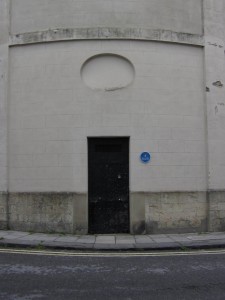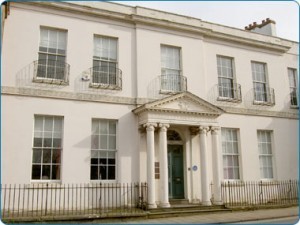Devizes and (historical) Desires!
Yesterday I played truant for a morning and went out on a little research jaunt to Devizes, a Wiltshire market town with a fascinating history. Although the history of Devizes goes right back to the building of a motte and bailey castle after the Norman Conquest, it was the Georgian buildings that I particularly wanted to see. In the 18th century the wool trade brought prosperity to Devizes and throughout the Georgian and Regency period many of the medieval wooden buildings of the town were replaced by brick. I must admit that I did get distracted by some of the older houses, though, such as the Elizabethan St John's Alley, in this picture on the right!
town with a fascinating history. Although the history of Devizes goes right back to the building of a motte and bailey castle after the Norman Conquest, it was the Georgian buildings that I particularly wanted to see. In the 18th century the wool trade brought prosperity to Devizes and throughout the Georgian and Regency period many of the medieval wooden buildings of the town were replaced by brick. I must admit that I did get distracted by some of the older houses, though, such as the Elizabethan St John's Alley, in this picture on the right!
The Market Place is Devizes has been the site of a weekly market since the 13th century and it contains a market cross given to the town by Lord Sidmouth in 1814. He was MP for the Borough from 1784 – 1805 as well as Prime Minister from 1801 – 1804. Apparently he was unwilling to provide the market cross and it took the townspeople from 1797 to persuade him! The cross bears an odd account of the death of a woman called Ruth Pierce who dropped dead in the market place in 1753 after telling a lie. A salutary tale!
 The famous Regency artist Sir Thomas Lawrence lived at the Bear Hotel as a boy after his father became landlord in 1773. The inn became famous for the sketches that Thomas made of the customers. An increase in trade in the 18th century saw it extended in elegant Bath stone and with a wrought iron verandah. It also had its own assembly rooms which were rebuilt behind the hotel when the Victorian Corn Exchange was erected. Note the enormous long windows!
The famous Regency artist Sir Thomas Lawrence lived at the Bear Hotel as a boy after his father became landlord in 1773. The inn became famous for the sketches that Thomas made of the customers. An increase in trade in the 18th century saw it extended in elegant Bath stone and with a wrought iron verandah. It also had its own assembly rooms which were rebuilt behind the hotel when the Victorian Corn Exchange was erected. Note the enormous long windows!
The market place contains a number of other elegant Georgian buildings, one with a pretty shell hood over the front door. Number 17 is a grand town house and has a hipped roof, gate piers, blind pointing and contemporary stables. Northgate House is another fine Georgian building with another handsome porch. It was transformed from a coaching inn and was used as the lodgings for the Assize judges.
The Town Hall surprised me. It looked very Victorian to my (admittedly amateur) gaze but it was in fact built in 1806. Around the back was the town "lock up" for miscreants hauled in for breaking the law. it looks a bit grim, as you can see in the photo on the right!
in 1806. Around the back was the town "lock up" for miscreants hauled in for breaking the law. it looks a bit grim, as you can see in the photo on the right!
 Long Street features some of the most impressive Georgian houses, double fronted with large gardens and in some cases side carriage entrances. Number 11, Lansdowne House, has a portico and delicate wrought iron balconies but looks a little past its Georgian splendour!
Long Street features some of the most impressive Georgian houses, double fronted with large gardens and in some cases side carriage entrances. Number 11, Lansdowne House, has a portico and delicate wrought iron balconies but looks a little past its Georgian splendour!
The history of Devizes proves that like many provincial market towns it had a far from sleepy existence. From the 18th century some local disturbances are recorded. A riot, connected with smuggling, occurred in 1765; another in 1795 was averted by the arrival of the Yeomanry and there was a third a year later. The last two were provoked by high food prices. A Militia riot in 1810, in which some townsmen and canal workers seemed keen to participate, was quelled by the Yeomanry. In 1817 a county meeting convened to congratulate the Prince Regent on his escape from assassination ended in disorder owing to hostility to 'Orator' Hunt, a fiery radical politician, who was in the crowd!
I was also fascinated to discover the derivation of the name Devizes, which comes from the Latin "Ad Divisas" meaning "on the boundary," a very unusual origin for an English place name.
©2011 Nicola Cornick. All Rights Reserved.
.


